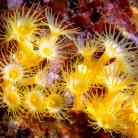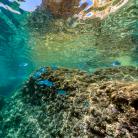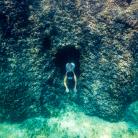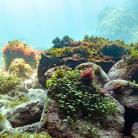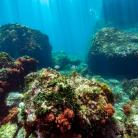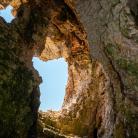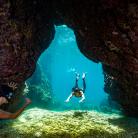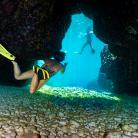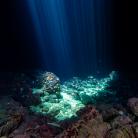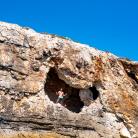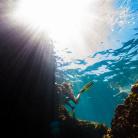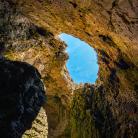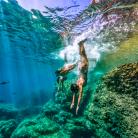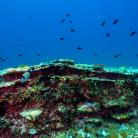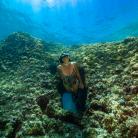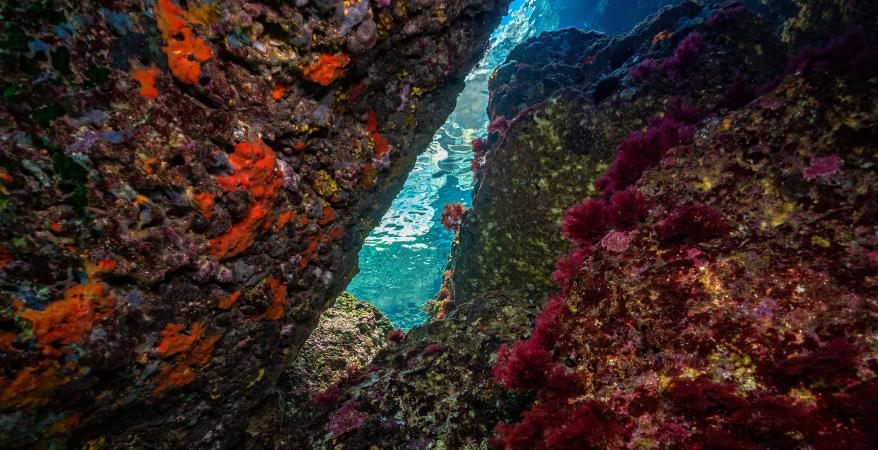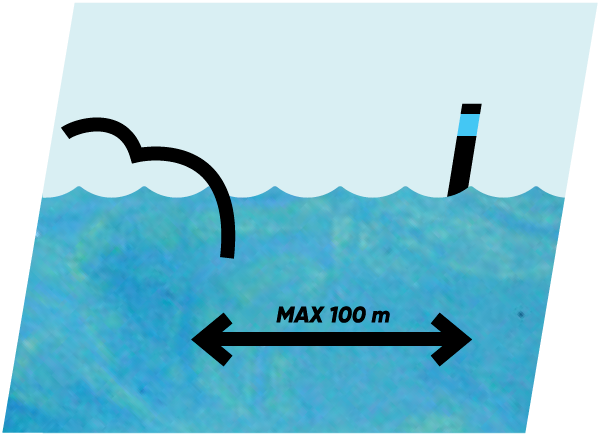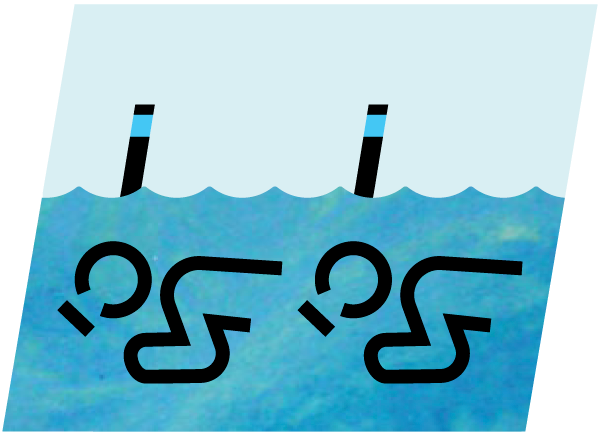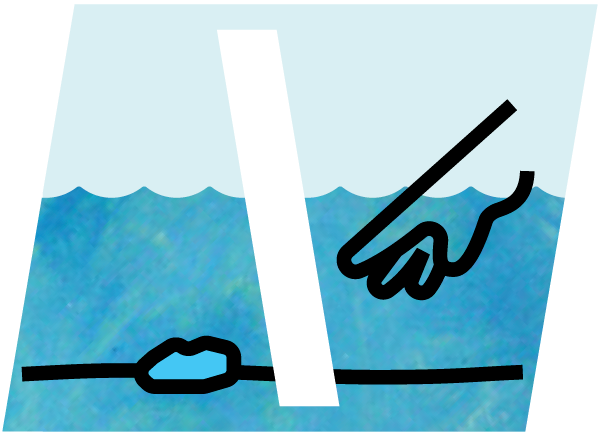Velika Kolombarica
Cape Kamenjak is the southernmost point of the Istrian peninsula, while the southernmost bay of Cape Kamenjak is Velika Kolombarica. As this Istria's southernmost peninsula is immersed in the open waters of the northern Adriatic and borders with deeper waters, sea currents ensure a constant flow of fresh sea.
Velika Kolombarica is a shallow location, with an average depth of 5 meters. It is equally interesting for scuba diving and snorkeling. The bottom is rocky and mixed with sand. Large stones are scattered throughout the location, which hides several surprises.
The real gem is hidden under the high gorges, right next to the big rock that stands imposingly at the bottom of the bay. By carefully observing the stone walls, you can notice a large, almost heart-shaped opening, into which doves occasionally fly and make their nests, and after which this largest cave on Kamenjak was named. You can also enter the cave by swimming. The sunlight gives the whole cave a particular bluish colour.
Diving boats anchor on a fixed diving buoy, and one of the simpler entrances in the sea for snorkeling enthusiasts is on the left side, in the direction of the high gorge, at the lowest point of the coast. The most interesting part to explore is around the rock that emerges from the water like an island towards the open sea. The cliff is surrounded by large boulders, sometimes up to 6 meters high. These boulders start at a depth of 8 meters, reaching a depth of 1-2 meters in places. The largest stone hides a secret passage overgrown with yellow cnidarian that resemble flowers. Shady cave entrances are usually overgrown with these beautiful yellow and orange decorations.
Under the large stones you will notice starfish and serpent stars of various sizes. If you notice a cluster of small stones around a hole in the rock, there is a high probability that an octopus hides inside.
The Velika Kolombarica cave has one roof hatch and two entrances, one of which is large and spacious, while the other is narrower, just enough for one diver to pass through. The cave is spacious with a high ceiling. The bottom is rocky, and in places covered with small pebbles. Sponges and algae of various colours grow inside the cave. Underwater, the cave splits into two branches. The left branch is actually a long blind cave with a muddy bottom hiding large shoals of fish fry and saddled seabream, mullets mixed with the brown meagre and small fish.
In this abundance of fauna, it is not rare to see conger eels swimming freely, as well as grebes hunting. Eels as well as various shrimps and crabs hide in every crevice or a large rock and walk on cave walls and underwater ceiling. When exiting the cave through a small passage, you will notice that the channel dividing the large cliff from the gorge is filled with stones. During high tide, this passage can be swum across by getting through between the rocks.
In their skirmishes against the Romans on the Adriatic, pirates carried out armed robberies as early as the Illyrian era, especially during the 3rd century BC, and with the strengthening of the Venetian maritime trade, the activity of the Croatian pirates also increased. It is recorded in the historical archives that the Ulcinj pirates regularly reached Istria in their sailing ships. Given that the level of the Adriatic Sea at that time used to be two meters lower, we can only imagine the number of those who hid their boats and treasures in Velika Kolumbarica...
If you continue to explore the terrain and follow the coastline, you will come across another cave in which there is a pool with an airspace and an extended branch of the cave that ends in a small tunnel that mainly provides a hiding place for a conger eel. The bottom is strewn with pebbles, and the walls of the cave have round depressions. If you continue further, you will come across two more dead end caves with a sandy bottom and an elevated entrance as well as several small stone roofs. The entire location gives the impression of greater spaciousness due to the sandy bottom, flat walls and large boulders.
Red and green algae as well as yellow tube sponges and unusual stone shapes are especially picturesque. In this location, you can see rare slugs, banded dye-murex snails, cowries, fan and smooth clams. Since this location is immersed in the open sea, it is possible to see an eagle ray or a large scale gurnard swimming on the sandy bottom.
Important notes
When the sea is rough, do not leave the cave through the small passage, because larger waves can roll up to a depth of 4 meters.
A small tunnel in a large boulder in front of a cliff that juts out of the water is not intended for the fully equipped divers as they could damage delicate cnidarian that inhabit the tunnel walls.
Velika Kolombarica is a prime location for snorkeling enthusiasts, but it is important that you assess your own fitness and breath holding capabilities. You should be careful and reasonable in assessing your own ability. The easiest way is to repeatedly dive to the entrance or exit and observe the distance you intend to dive. In this way, you can calibrate your options. A shorter ascent would result in you hitting your head on the cave ceiling, which is uneven and overgrown with various algae and sponges.
Keep in mind that Cape Kamenjak is an intact protected nature area. Be careful in your research and snorkel in pairs. Although the town of Premantura seems within reach, Velika Kolombarica is more than 3.5 kilometers away from the town and the entrance to the Kamenjak Nature Park. Kamenjak Nature Park is intertwined with white, rough macadam roads that require very slow and careful driving.







